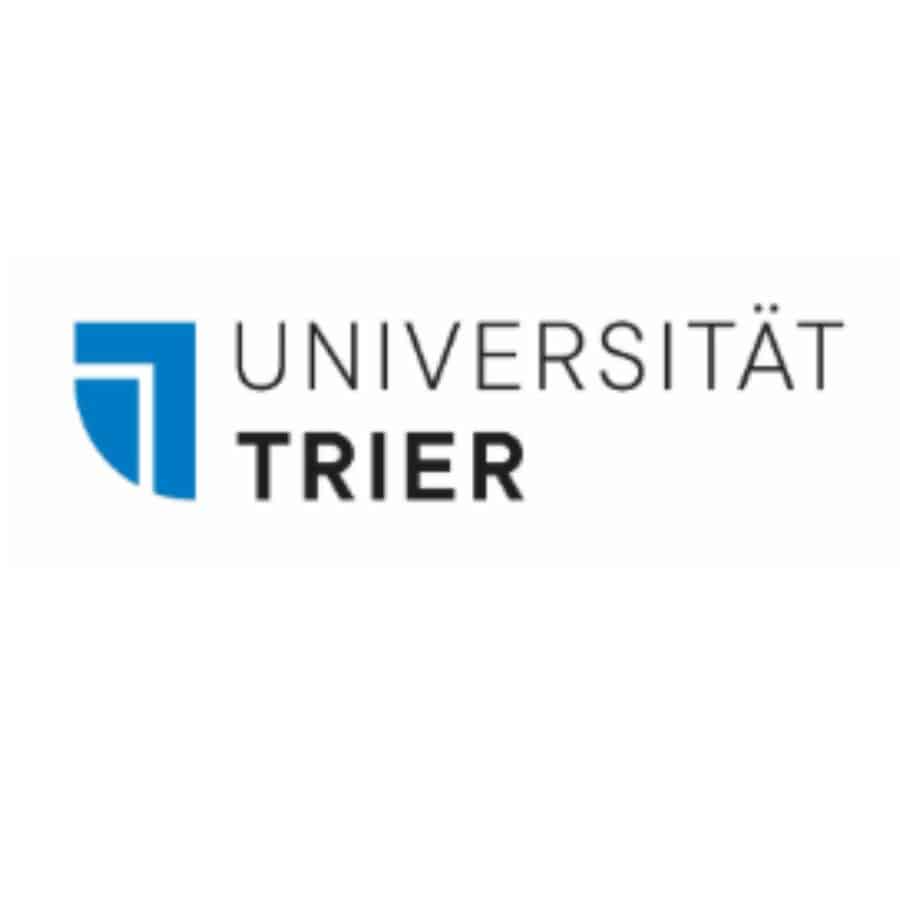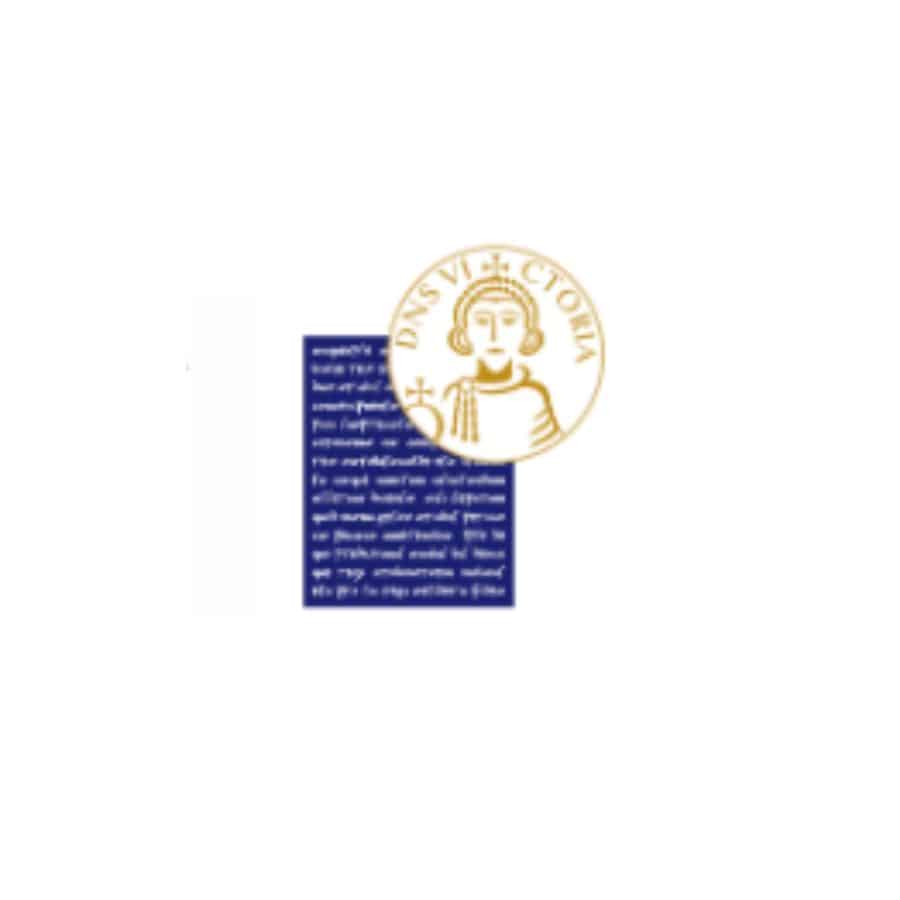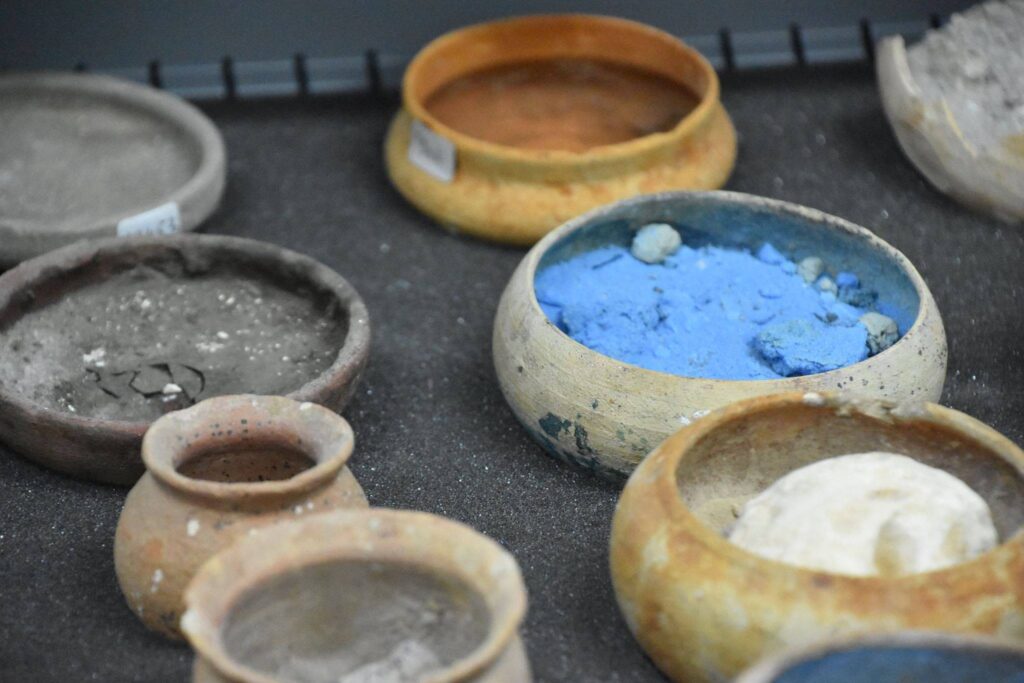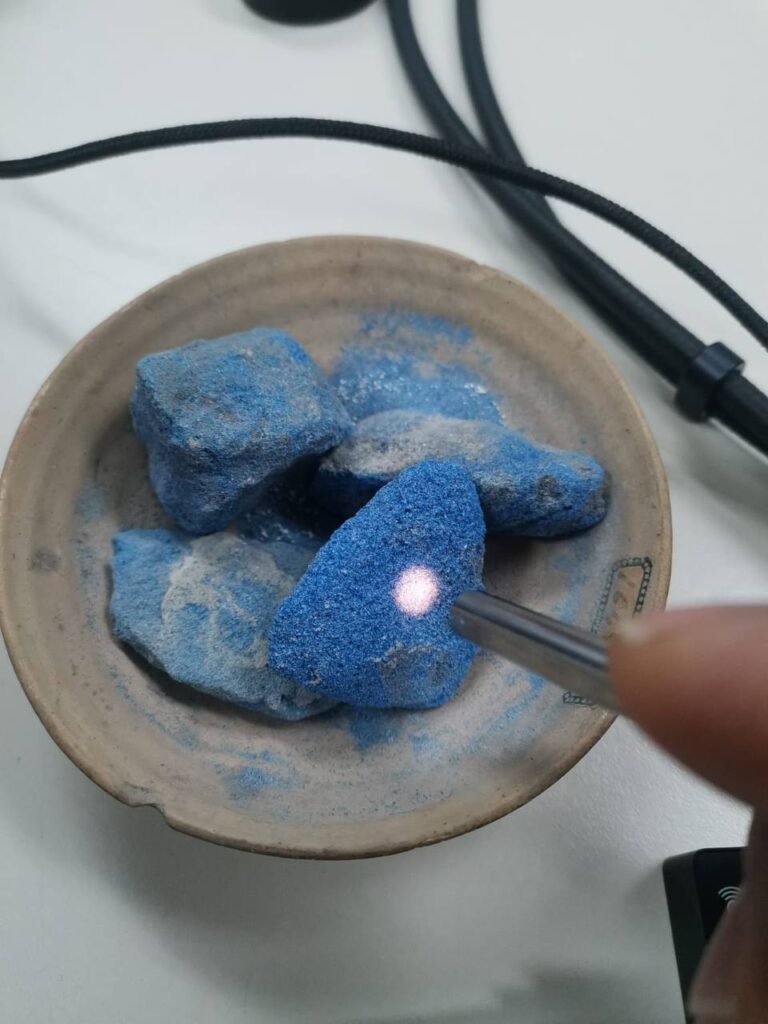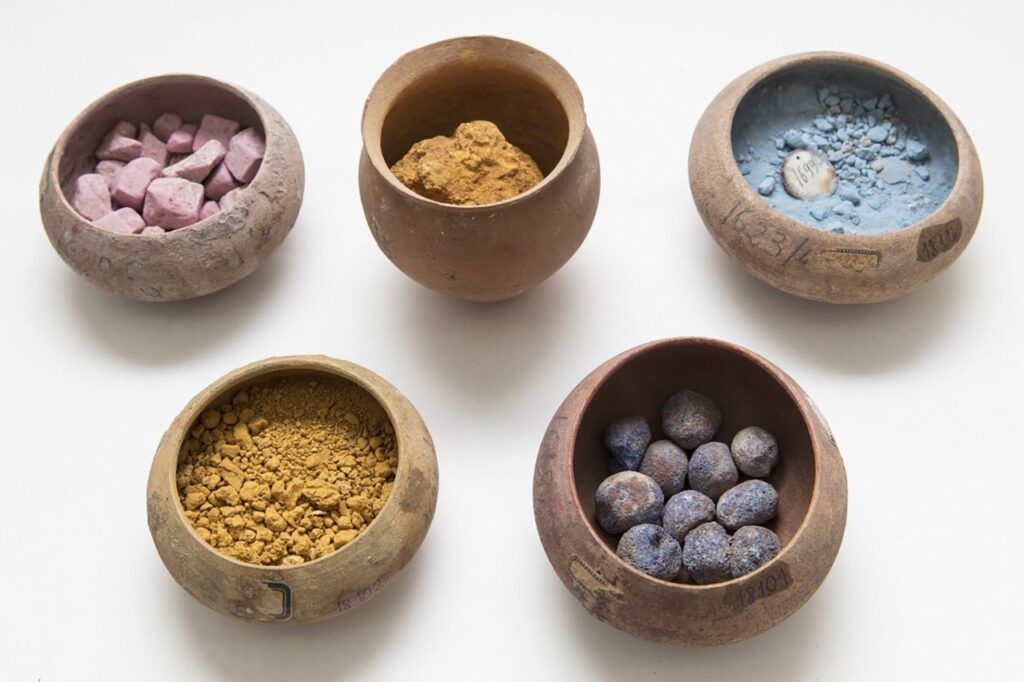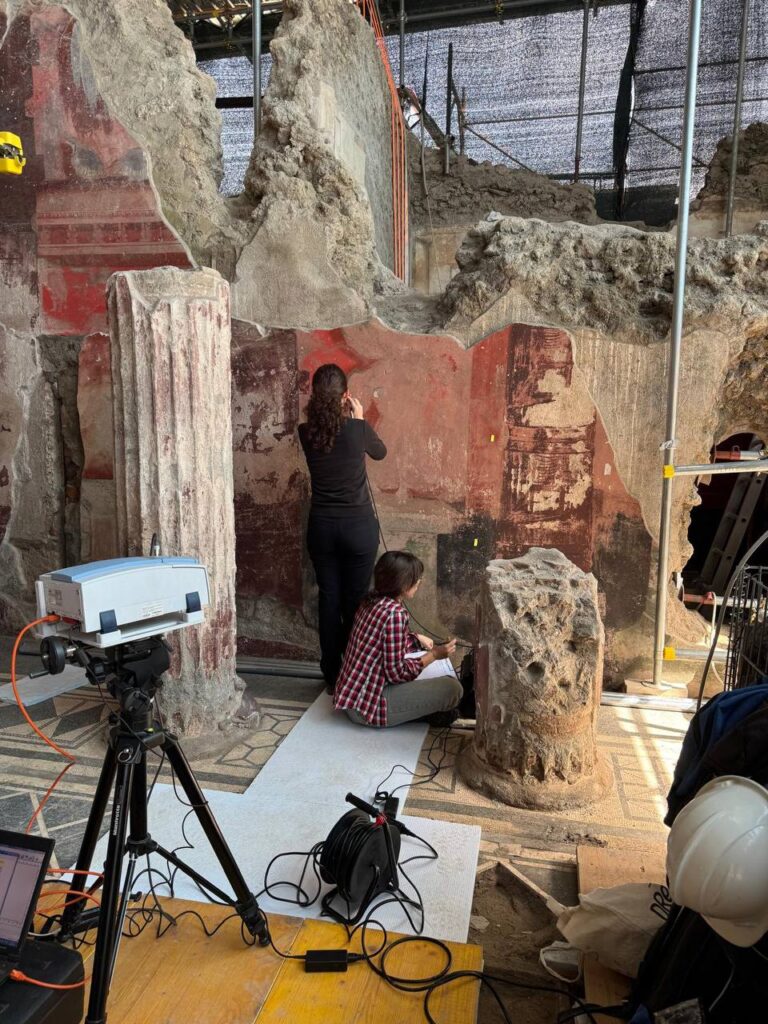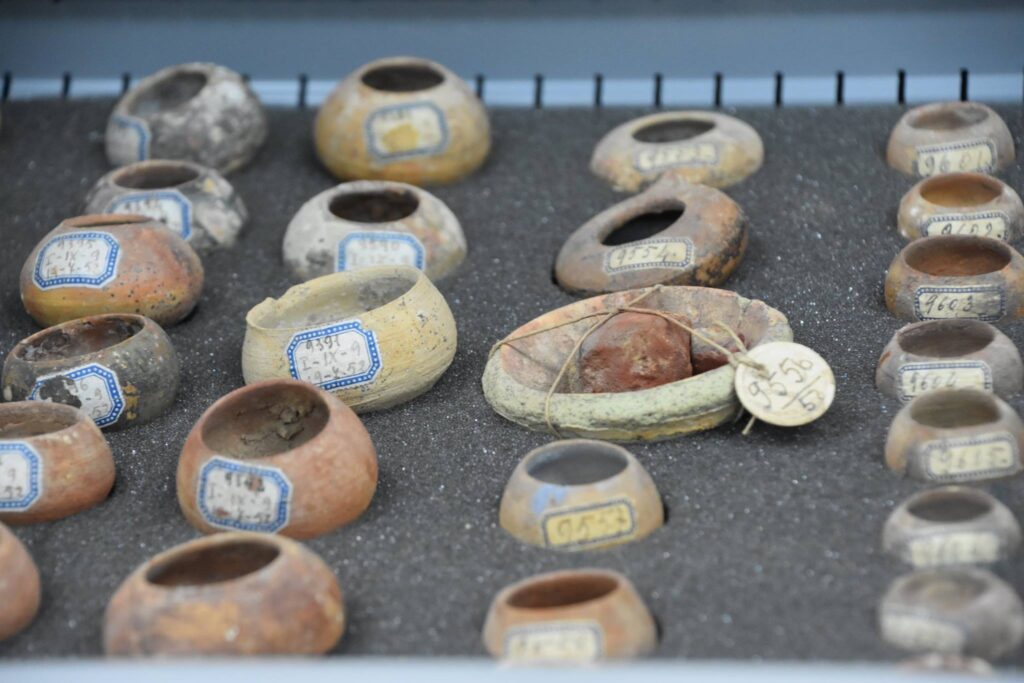Bringing Color to Pompeii
A RESEARCH INITIATIVE FOCUSING ON THE PIGMENTS USED IN ANCIENT POMPEII
Bringing Color to Pompeii (BRICO Pompeii) is a multidisciplinary research initiative led by the Archaeological Park of Pompeii in collaboration with the SherIL/University of Sannio and Trier University. The project seeks to uncover the origins, trade routes, and uses of the pigments that once gave Pompeii’s walls their vivid hues, providing new perspectives on ancient commerce, craftsmanship, and cultural exchange in the Roman world. Building on recent advances in archaeometry and historical research, BRICO Pompeii focuses on pigments as a unique category of archaeological evidence—materials that, once applied to walls, reach their destination and remain unambiguously linked to their place of use.
The research begins with tracing pigments “from the source to the pot,” drawing on the remarkable survival of pigment bowls preserved by the eruption of 79 CE. These bowls, found in painters’ workshops, construction sites, and storerooms, are being studied with a suite of advanced mineralogical, geochemical, and isotopic techniques. This process allows the team to establish precise “fingerprints” for each pigment, detailing their chemical and geological composition while preserving the original artifacts. These fingerprints are then compared to known sources of pigments documented in ancient literary accounts—such as Pliny’s descriptions—and modern geological surveys of the Mediterranean.
To reconstruct how pigments traveled to Pompeii, the project integrates scientific analysis with dynamic modeling of maritime trade. Using the “Digital Interactive Maritime Atlas of History” developed at Trier University, which simulates routes based on historical weather data and experimentally verified sailing performance of reconstructed Roman merchant ships, researchers can model likely transport paths, estimate travel times, and assess transaction costs and risks. This enables a more nuanced reconstruction of ancient supply chains, highlighting the interplay between geography, economics, and cultural preferences in the procurement of pigments.
130000
Beyond tracing origins and routes, the project also aims to understand how pigments were selected, prepared, and applied in different social contexts. By comparing pigment compositions across buildings of varying status—from modest workshops to lavishly decorated villas—researchers can assess how access to materials and artistic choices varied between social classes and over time. This work will also reveal the degree to which local production supplemented imported pigments as trade conditions evolved.
Key outcomes will include an open-access “pigment library” containing the chemical, geological, and isotopic profiles of all analyzed pigments. This resource will serve conservators, archaeologists, and scientists worldwide, enabling future research without the need for further sampling of fragile artifacts. The project will also produce academic publications, public engagement materials, and an international conference to share results, methods, and collaborative opportunities.
Early findings already suggest that pigments may be a more definitive indicator of trade networks than ceramics, which are often reused and relocated. By illuminating the tangible links between material culture, economic exchange, and artistic expression, BRICO Pompeii promises to reshape our understanding of the interconnected Roman Mediterranean—transforming Pompeii from a site of study into a global laboratory for the science of ancient color.
Principal Investigators / Collaborators
Pompeii Archaeological Park:
Dr. Gabriel Zuchtriegel (PI)
Dr. Valeria Amoretti
SherIL/University of Sannio:
Prof. Celestino Grifa
Prof. Mariano Mercurio
Dr. Chiara Germinario
TRANSMARE/Trier University:
Prof. Pascal Warnking

